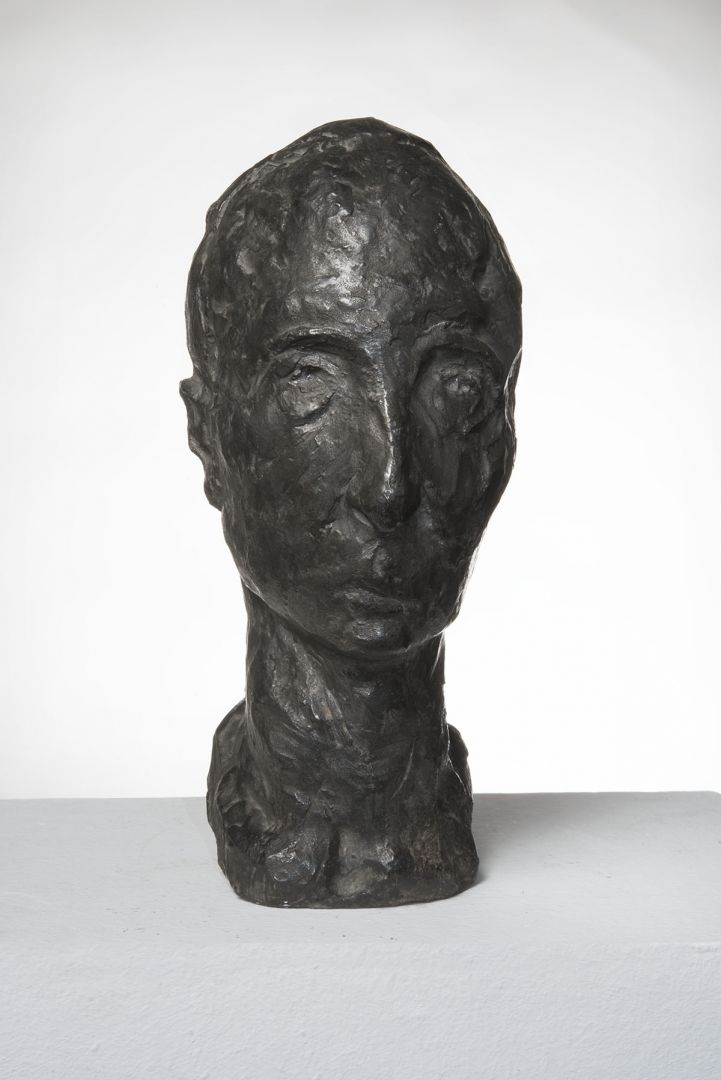The Experimental Youth - 3. view /
Portrait of a Man (Pál Gegesi Kiss)
FORGÁCH HANN Erzsébet
Budapest, 1897 – Budapest, 1954
Portrait of a Man (Pál Gegesi Kiss), 1945
The figures Forgách Hann produced in the 1940s were devoid of all classical proportions, with distorted, elongated, grotesque forms conveying pain, symbolising the destructive horrors of war. The expressively toned works she made after 1943 show her attempts to reconcile traditional portrait sculpture with the modern requirements of the plastic arts, and there is also a trace of surrealism in her art. The portrait sculptures she began to make in the mid-1940s preserved their distinctiveness, but instead of being faithful reproductions of anatomical and facial features, the emphasis was now on psychological authenticity. The portrait of her husband, the medical professor Pál Gegesi Kiss (1900–1993), is one such sculpture, as is the self-portrait of the artist. She modelled them using expressive, strangely restless malformations, and appended individual character traits onto amorphous masses. The heads exude a sense of malleability, and give no indication of having an anatomical structure within. As she herself explained, these works are expressions of living with a constant feeling of fear and anxiety.
